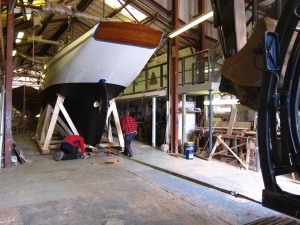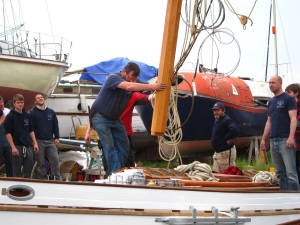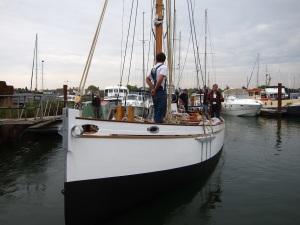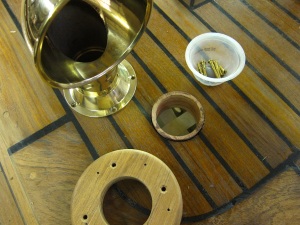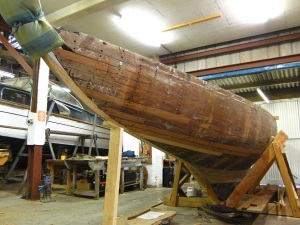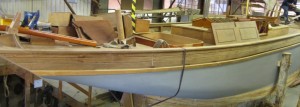 It was a slow journey from the back of the IBTC boat shed to Lake Lothing. It took several days for Germaine to travel the 100 yards or so out of the shed and back into the water. She’d waited 16 years and at 11.00 last Tuesday morning she was back in the water. Awakened at last she made her way across the lake as we watched in admiration.
It was a slow journey from the back of the IBTC boat shed to Lake Lothing. It took several days for Germaine to travel the 100 yards or so out of the shed and back into the water. She’d waited 16 years and at 11.00 last Tuesday morning she was back in the water. Awakened at last she made her way across the lake as we watched in admiration.
The first stage of her journey started a couple of weeks ago. Her way was blocked by an accumulation of boats of various shapes, sizes and degrees of portability. When they had been lifted, pushed, pulled and rolled out of the way (see Henry’s brilliant shed shuffle), Germaine was ready to glide out of the shed on her wooden cradle. We felt like an Egyptian chain gang as she slid along on greased boards which had to be carried from back to front, but we had some some help from a digger and a for lift truck, which eased the load somewhat. She slid out of the shed and along the hard to the yard next door where she reclined in her cradle for a few days to wait for the big day.
She needed a few last minute adjustments of course, and we carried on working on her out in the yard despite the rain. My contribution was very minor, just attaching a couple of fairleads to her stern, but it was nice to be part of it.
 As Ron eased her into the water using the mobile boat hoist, the rigger and his team rigged up the very complicated looking gaff rig on her mast in an impressively short order. The was hoisted into place and suddenly she was ready for her first voyage across the lake to Haven Marina. We waved her off and cheered.
As Ron eased her into the water using the mobile boat hoist, the rigger and his team rigged up the very complicated looking gaff rig on her mast in an impressively short order. The was hoisted into place and suddenly she was ready for her first voyage across the lake to Haven Marina. We waved her off and cheered.
Germaine’s next stop will be Douarnenez later this summer when her rigging and sails have been completed.

